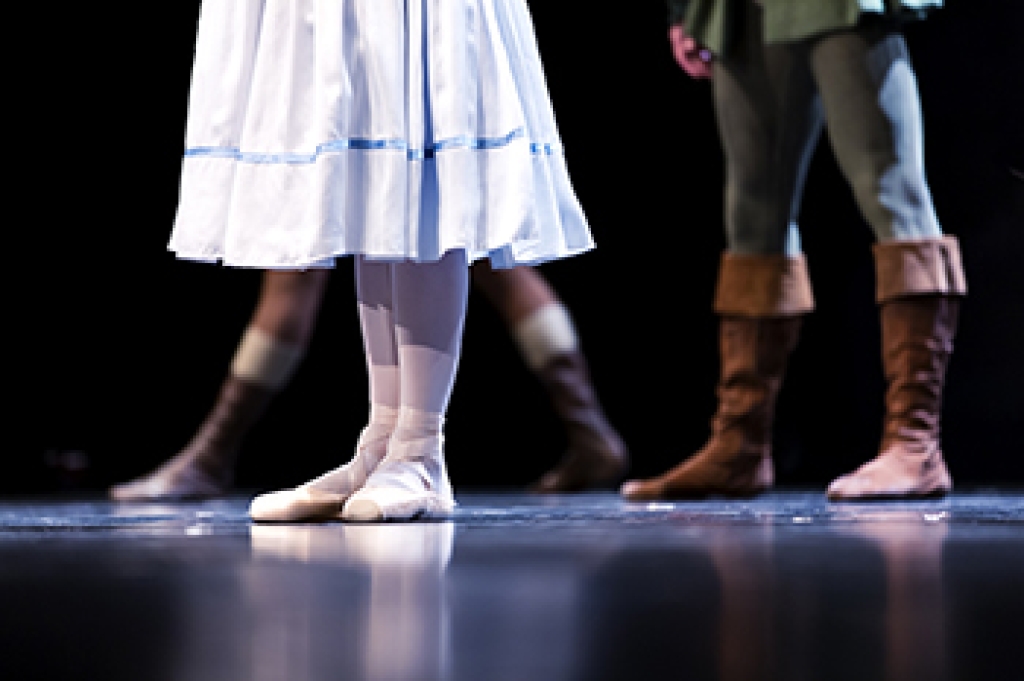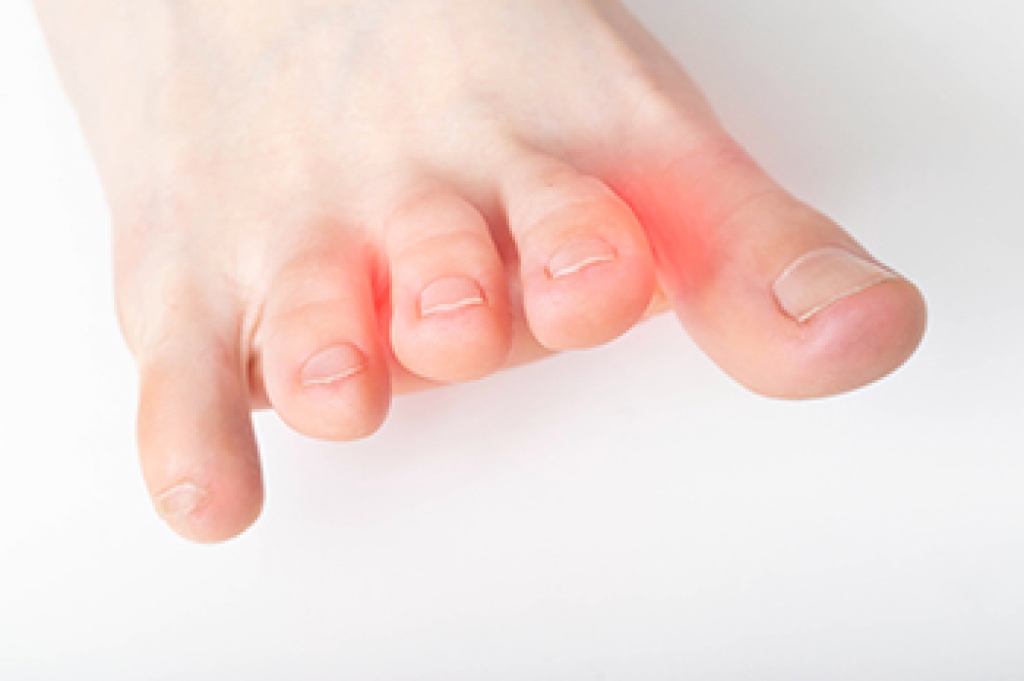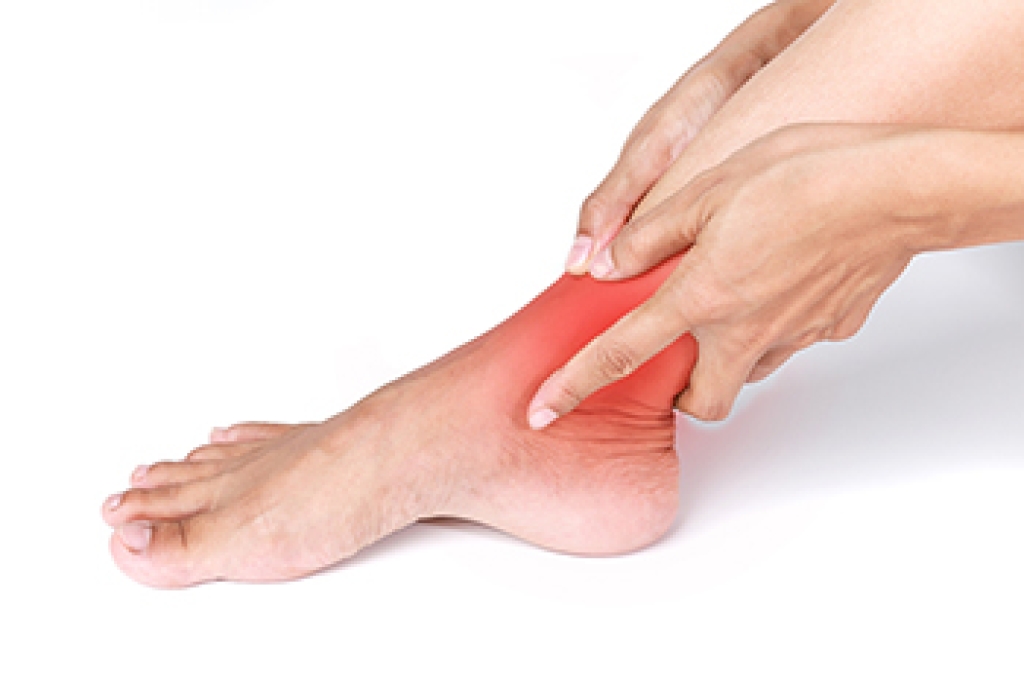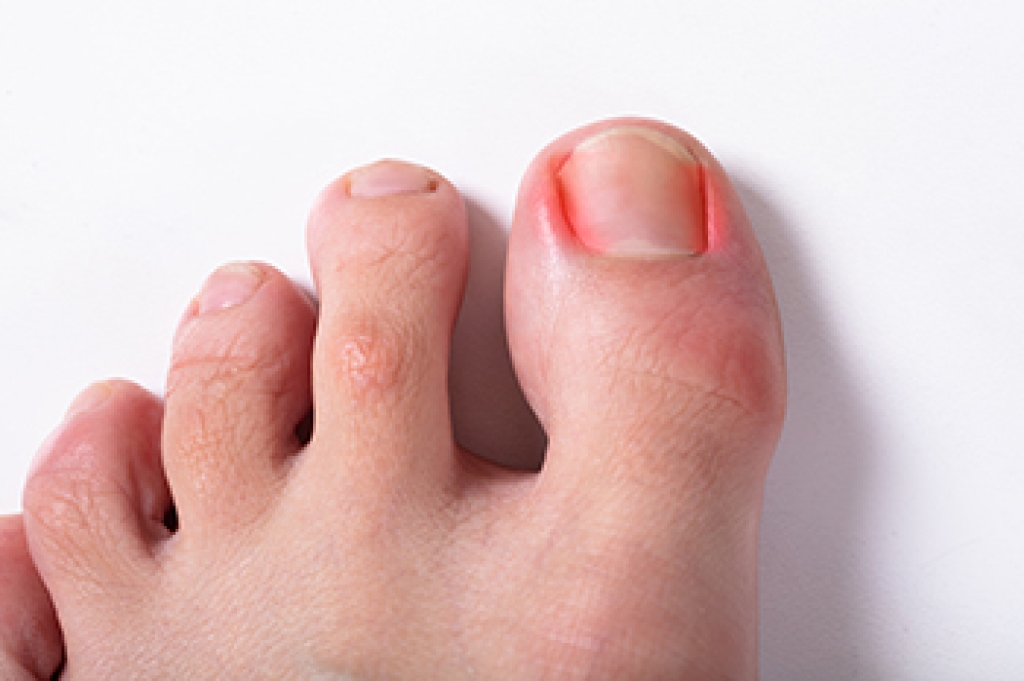Connect With Us
Blog
Blog
Dance Foot Injuries

Dance is a beautiful art form, but it can take a toll on the dancer’s feet. Foot injuries are common among dancers because of the repetitive and high-impact movements involved. One foot injury that many dancers experience is metatarsalgia or pain and inflammation in the balls of the feet. This condition can result from a variety of things, including excessive flexibility, repetitive stress on the metatarsal bones, improper technique, and inadequate footwear. A dancer can practice prevention techniques to maintain their health and the quality of their performance. Resting and strengthening the muscles on the bottom of the feet often help with inflammation and pain. An example of an exercise that is useful is toe scrunches, which involves pulling a towel across the floor inward with the toes. Adding cushioning to dance shoes and orthotics to regular shoes might reduce the damage this ailment has on the feet. If you are a dancer and are experiencing foot pain, it is suggested that you visit a podiatrist for an examination and treatment.
Ankle and foot injuries are common among athletes and in many sports. They can be caused by several problems and may be potentially serious. If you are feeling pain or think you were injured in a sporting event or when exercising, consult with David Carmack, DPM from Texas. Our doctor will assess your condition and provide you with quality foot and ankle treatment.
Common Injuries
The most common injuries that occur in sporting activities include:
- Achilles Tendonitis
- Achilles Tendon Rupture
- Ankle Sprains
- Broken Foot
- Plantar Fasciitis
- Stress Fractures
- Turf Toe
Symptoms
Symptoms vary depending upon the injury and in some cases, there may be no symptoms at all. However, in most cases, some form of symptom is experienced. Pain, aching, burning, bruising, tenderness, tightness or stiffness, sensation loss, difficulty moving, and swelling are the most common symptoms.
Treatment
Just as symptoms vary depending upon the injury, so do treatment options. A common treatment method is known as the RICE method. This method involves rest, applying ice, compression and elevating the afflicted foot or ankle. If the injury appears to be more serious, surgery might be required, such as arthroscopic or reconstructive surgery. Lastly, rehabilitation or therapy might be needed to gain full functionality in the afflicted area. Any discomfort experienced by an athlete must be evaluated by a licensed, reputable medical professional.
If you have any questions please contact our office located in Marble Falls, TX . We offer the newest diagnostic and treatment technologies for all your foot and ankle needs.
Can Morton's Neuroma Go Away?

Morton’s neuroma, known as intermetatarsal neuroma, is an inflamed nerve in the ball of the foot, typically behind the third and fourth toes. It can occur from wearing tight shoes or from having foot deformities. Morton’s neuroma presents itself as pain, swelling, numbness, tingling, or burning of the front of the foot. Those who have had this condition liken it to the feeling of walking on a pebble or rolled-up sock. This nerve is sensitive to excessive weight on the foot and scar tissue can form around the nerve and sometimes enlarge it. Those who wear high heels or tight-fitting shoes are susceptible to this condition. Treatments vary by the severity of Morton's neuroma. Resting the foot, cushioning the ball of the foot with padding, and wearing orthotics to take pressure off of the nerve can help. If more conservative treatment does not relieve discomfort, surgery can be performed to remove the inflamed nerve segment. If you are suffering from pain in your midfoot, it is suggested that you make an appointment with a podiatrist for a proper diagnosis and a treatment plan that is customized to your situation.
Morton’s neuroma is a very uncomfortable condition to live with. If you think you have Morton’s neuroma, contact David Carmack, DPM of Texas. Our doctor will attend to all of your foot care needs and answer any of your related questions.
Morton’s Neuroma
Morton's neuroma is a painful foot condition that commonly affects the areas between the second and third or third and fourth toe, although other areas of the foot are also susceptible. Morton’s neuroma is caused by an inflamed nerve in the foot that is being squeezed and aggravated by surrounding bones.
What Increases the Chances of Having Morton’s Neuroma?
- Ill-fitting high heels or shoes that add pressure to the toe or foot
- Jogging, running or any sport that involves constant impact to the foot
- Flat feet, bunions, and any other foot deformities
Morton’s neuroma is a very treatable condition. Orthotics and shoe inserts can often be used to alleviate the pain on the forefront of the feet. In more severe cases, corticosteroids can also be prescribed. In order to figure out the best treatment for your neuroma, it’s recommended to seek the care of a podiatrist who can diagnose your condition and provide different treatment options.
If you have any questions, please feel free to contact our office located in Marble Falls, TX . We offer the newest diagnostic and treatment technologies for all your foot care needs.
Common Reasons to Have Ankle Pain

There are several symptoms that accompany ankle pain, including stiffness, pain, and swelling. Ankle pain can happen for various reasons, such as a fall, a direct blow to the ankle, or if it suddenly twists beyond its normal range of motion. An existing medical condition can cause the muscles surrounding the ankle joint to weaken, which may lead to having ankle pain. Many people have difficulty walking with ankle pain, and choose to wrap their ankle with an elastic bandage. This is often successful in providing stability as it heals. Relief may be found when the affected foot is frequently elevated, and it is beneficial to avoid standing for long periods of time. If you have ankle pain, it is suggested that you speak with a podiatrist who can determine how severe it is, in addition to offering you correct treatment options.
Ankle pain can be caused by a number of problems and may be potentially serious. If you have ankle pain, consult with David Carmack, DPM from Texas. Our doctor will assess your condition and provide you with quality foot and ankle treatment.
Ankle pain is any condition that causes pain in the ankle. Due to the fact that the ankle consists of tendons, muscles, bones, and ligaments, ankle pain can come from a number of different conditions.
Causes
The most common causes of ankle pain include:
- Types of arthritis (rheumatoid, osteoarthritis, and gout)
- Ankle sprains
- Broken ankles
- Achilles tendonitis
- Achilles tendon rupture
- Stress fractures
- Bursitis
- Tarsal tunnel syndrome
- Plantar fasciitis
Symptoms
Symptoms of ankle injury vary based upon the condition. Pain may include general pain and discomfort, swelling, aching, redness, bruising, burning or stabbing sensations, and/or loss of sensation.
Diagnosis
Due to the wide variety of potential causes of ankle pain, podiatrists will utilize a number of different methods to properly diagnose ankle pain. This can include asking for personal and family medical histories and of any recent injuries. Further diagnosis may include sensation tests, a physical examination, and potentially x-rays or other imaging tests.
Treatment
Just as the range of causes varies widely, so do treatments. Some more common treatments are rest, ice packs, keeping pressure off the foot, orthotics and braces, medication for inflammation and pain, and surgery.
If you have any questions please feel free to contact our office located in Marble Falls, TX . We offer the newest diagnostic tools and technology to treat your foot and ankle needs.
How Ingrown Toenails Can Develop

There are various reasons an ingrown toenail can develop. This painful foot condition is defined as the toenail growing into the skin instead of over it. Common reasons for an ingrown toenail to develop are trimming the toenails incorrectly, and wearing shoes that do not fit properly. Additionally, it may happen from having an abnormal foot structure, genetic reasons, or if a toe injury has occurred. Temporary relief may come from soaking the affected foot in warm water, followed by using a small piece of cotton to separate the nail from the skin. It can also help to wear wider shoes that can accommodate the affected toe, and the pain may be eased by taking over-the-counter medication. Permanent relief can be found when a podiatrist is contacted, who can perform minor surgery to correct this condition. If you have developed an ingrown toenail, it is strongly suggested that you speak to this type of doctor who can offer you treatment options that are best for you.
Ingrown toenails can become painful if they are not treated properly. For more information about ingrown toenails, contact David Carmack, DPM of Texas. Our doctor can provide the care you need to keep you pain-free and on your feet.
Ingrown Toenails
Ingrown toenails occur when a toenail grows sideways into the bed of the nail, causing pain, swelling, and possibly infection.
Causes
- Bacterial infections
- Improper nail cutting such as cutting it too short or not straight across
- Trauma to the toe, such as stubbing, which causes the nail to grow back irregularly
- Ill-fitting shoes that bunch the toes too close together
- Genetic predisposition
Prevention
Because ingrown toenails are not something found outside of shoe-wearing cultures, going barefoot as often as possible will decrease the likeliness of developing ingrown toenails. Wearing proper fitting shoes and using proper cutting techniques will also help decrease your risk of developing ingrown toenails.
Treatment
Ingrown toenails are a very treatable foot condition. In minor cases, soaking the affected area in salt or antibacterial soaps will not only help with the ingrown nail itself, but also help prevent any infections from occurring. In more severe cases, surgery is an option. In either case, speaking to your podiatrist about this condition will help you get a better understanding of specific treatment options that are right for you.
If you have any questions, please feel free to contact our office located in Marble Falls, TX . We offer the newest diagnostic and treatment technologies for all your foot care needs.
Blog Archives
- 2025
- 2024
- 2023
- 2022

